Location
Our Seattle Location
Northpoint Seattle’s outpatient treatment program is located in beautiful Seattle, Washington, and we work to help the surrounding communities.
- Seattle
2111 N Northgate Way Suite 101,
Seattle, WA 98133, United States
Meth is devastating to people who use it and slip into the vicious cycle of addiction. It can also destroy relationships and have severe consequences on those surrounding the addicted person. The recovery journey only begins after a person stops taking a drug. Unfortunately, meth can remain in the body long after use, and the body can be affected long after quitting.
If you or a loved one struggles with meth addiction, it is time to get help. Contact us at [Direct] today to take the first steps on the road to recovery.
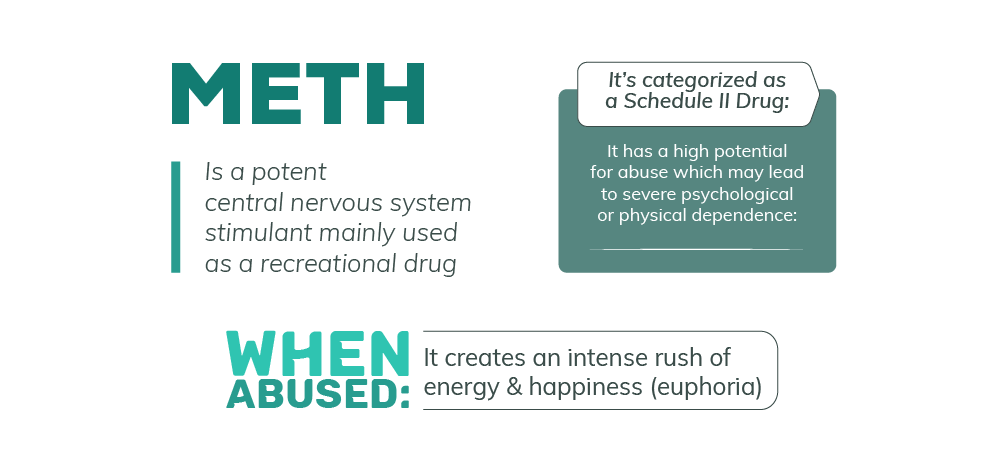
Methamphetamine, or meth, is a highly addictive street drug. The user usually snorts, smokes, or injects the drug, leading to a fast high. As an amphetamine, meth is an upper that produces a sense of euphoria and energy.
The body uses the drug quickly, which often drives people struggling with meth addiction to seek out another dose soon after their first. They will often have to use higher doses to feel the same effects as they continue to use the drug.
Although a meth high is fast and used quickly by the body, evidence of its use can remain in a person's body for a while after they come down. Drug tests can effectively find traces of meth for days and weeks after use.
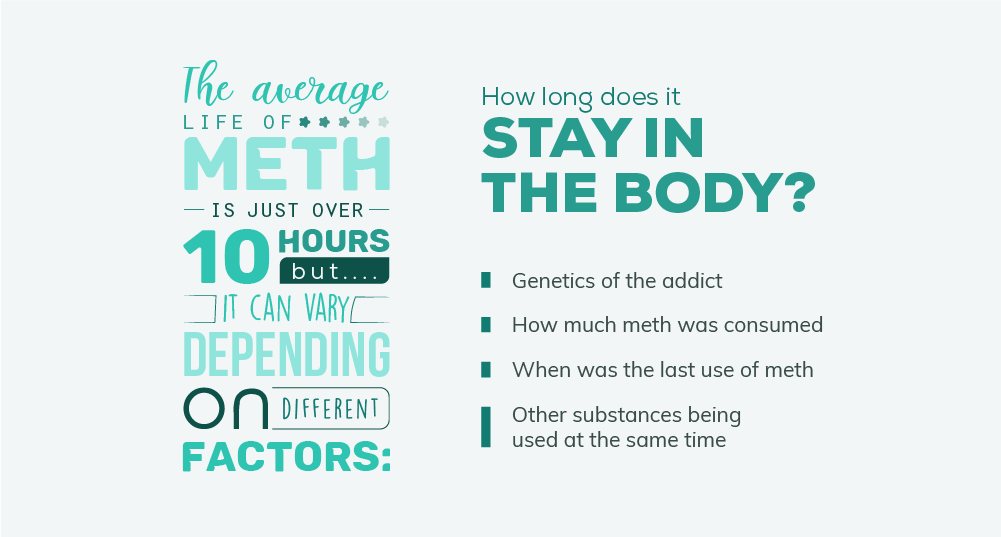
As drugs move through the body, they are broken down and used by different body systems. Experts use a half-life to measure how long it takes the body to use the drug.
For example, meth has a half-life of about 10 hours. After 10 hours, the body will use up half of the meth dose; 10 more hours later, another half will be gone. This cycle continues until the body uses all of the meth or eliminates it.
Every person's body will use and eliminate meth at a different pace due to factors like:
Even though each person will store meth in their body for a different period, standard drug tests can be reliable for detecting evidence of meth use. These tests are often used as one of the first steps to recovery by determining if someone is still using the drug.
Standard drug tests are given for various reasons, including new employment, pain management treatment, and drug abuse rehabilitation. Trained technicians complete these tests using:
As the body uses meth, traces of its use are evident for a while. People addicted to the drug for a long time can often test positive for longer, especially using a hair test.
With euphoria and a spike of energy, meth users often feel that they are better on the drug than without it. As they continue to use it and become dependent, they may experience severe mental and physical side effects.
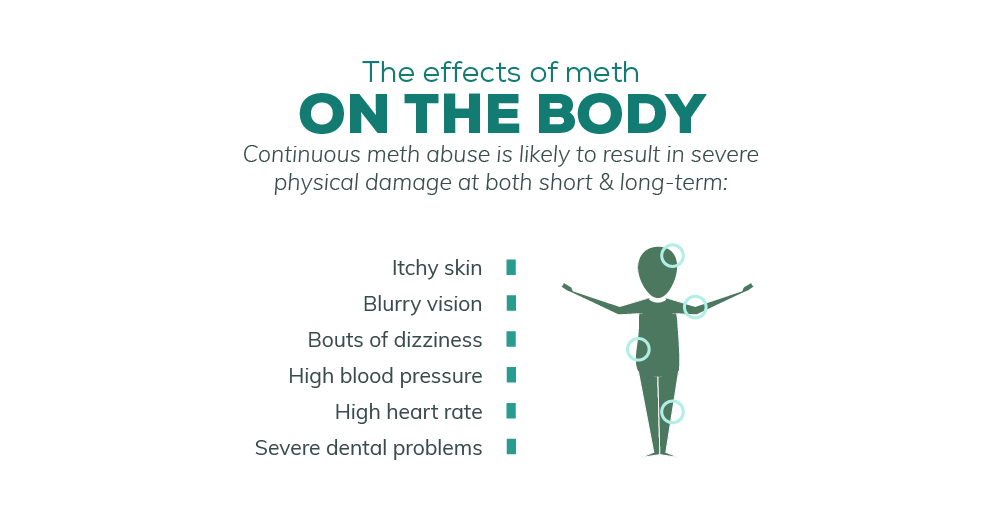
Meth users often end up with rotten teeth and dried saliva glands, called "meth mouth." Usually, their teeth will turn black and eventually fall out after stumbling into the cycle of meth addiction
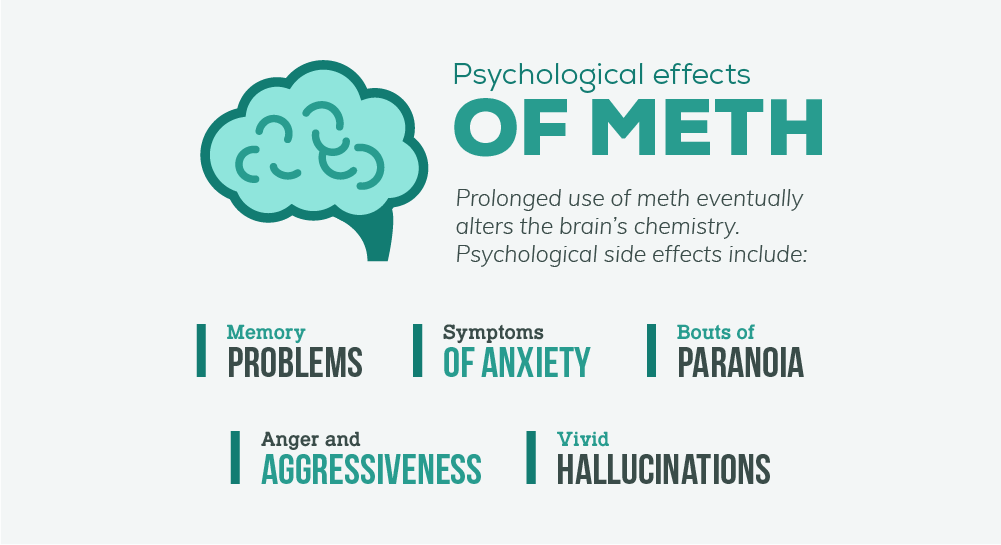
The longer someone uses meth, the more severe the mental effects become. Brain structure can change significantly, leading to memory lapses and even trouble with ordinary motor skills like writing.
When people become addicted to meth, they may seek other drugs or alcohol to help them feel high more quickly. As both substances work through the body, the time it takes for the body to eliminate both may increase.
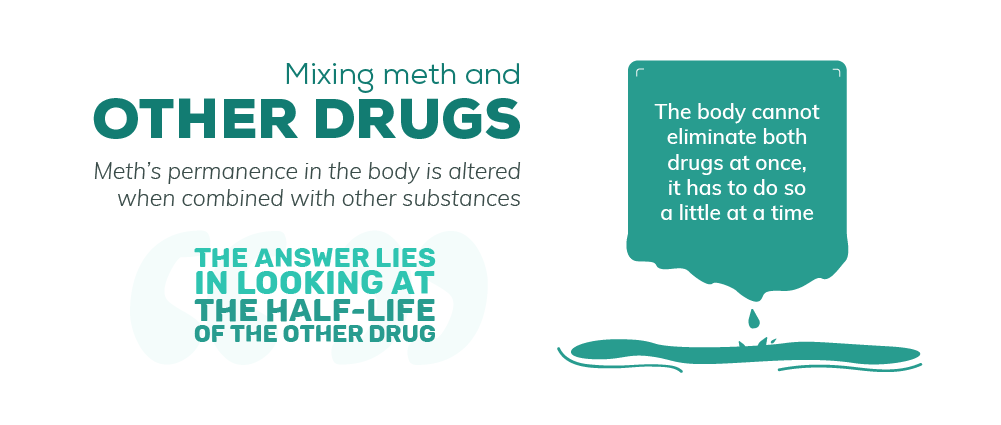
Depending on the half-life of the other substance in use, a drug test may show evidence of meth use long after it usually does. As positive tests continue to register, a person can have an extended detoxification period and may even drag out withdrawal symptoms.
Trying to stop using meth is an intense, often isolating experience. Withdrawal symptoms can be severe and cause many people to relapse. Some common meth withdrawal symptoms include:
These symptoms can be so severe that they may even be life-threatening. Physical symptoms usually peak within 10 days, but mental symptoms can drag on for weeks or months. Finding a professional detox and rehabilitation center can be a critical step toward recovery.
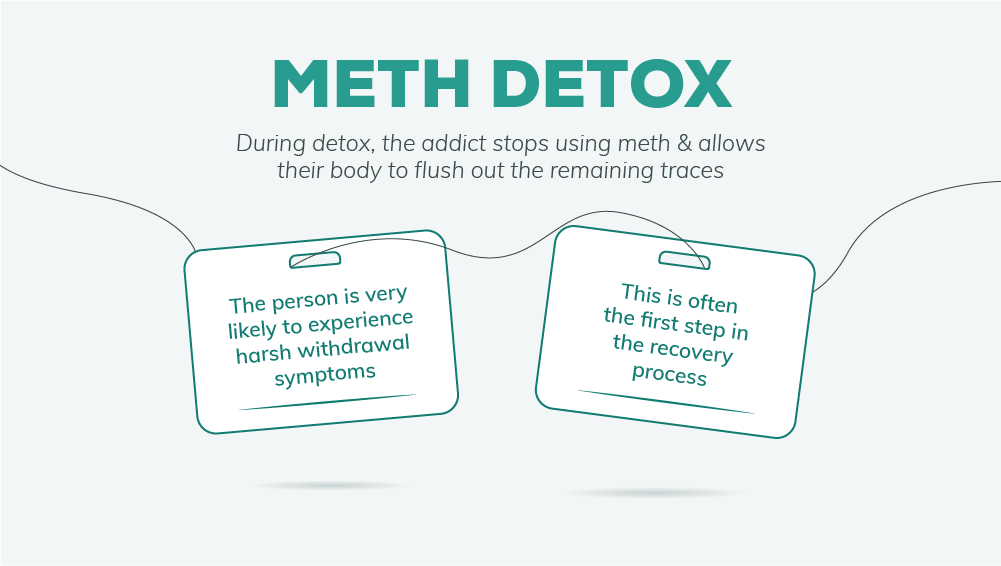

We know that everyone recovers differently. Our professional rehab staff can help you learn recovery skills through:
Our flexible intensive outpatient program allows you to continue living your life while attending therapy sessions. You can continue to rebuild the relationships with your support system and get back on your feet while learning new skills.
There is no better time to start the road to recovery than now. Call[Direct] to get started.

Our admissions coordinators are here to help you get started with treatment the right way. They'll verify your health insurance, help set up travel arrangements, and make sure your transition into treatment is smooth and hassle-free.
[DirectNumber] Contact Us